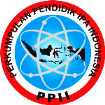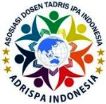Digital Technology Approach In Chemistry Education: A Systematic Literature Review
Abstract
This study systematically reviews empirical studies on digital learning technologies and related instructional techniques for chemistry education from 2020 to 2022. Using the PRISMA criteria, the relevant article's history was followed using the Web of Science, Scopus, and ERIC databases. In this digital era, studies on pedagogical innovations mixed with new technologies are proliferating as a result of technological progress and the emergence of Artificial Intelligence (AI) technology. A growing corpus of empirical research indicates the potential for incorporating digital technology in diverse educational settings. Various new technologies, including robotics, learning analytics, virtual reality (VR), and augmented reality (AR), have found extensive use and have bright futures in the field of chemistry education. According to the current study, VR and digital learning apps were the most completely examined among the recognized technologies employed in chemistry education. The main areas of interest in the classroom were visualization, engagement with chemical structures, and hands-on activities. The findings of this study, which examined impact, advantages, disadvantages, and challenges of online technology in the process of chemistry education, lends insight on the rapidly evolving disciplines of chemistry education research and technologically enhanced instruction.
Keywords: digital, chemistry, education, technology, virtual.
Full Text:
PDFReferences
Accettone, S. L. W. (2022). Student Perceptions of Remote Chemistry Laboratory Delivery Models. Journal of Chemical Education, 99(2). https://doi.org/10.1021/acs.jchemed.1c00757
Ambruso, K., & Riley, K. R. (2022). At-Home Laboratory Experiments for the Analytical Chemistry Curriculum. Journal of Chemical Education, 99(2). https://doi.org/10.1021/acs.jchemed.1c00943
Crucho, C. I. C., Avó, J., Diniz, A. M., & Gomes, M. J. S. (2020). Challenges in teaching organic chemistry remotely. Journal of Chemical Education, 97(9). https://doi.org/10.1021/acs.jchemed.0c00693
De Souza, L. D., Silva, B. V., Araujo Neto, W. N., & Rezende, M. J. C. (2021). Digital technologies in chemistry teaching: A brief review of the available categories and tools. In Revista Virtual de Quimica (Vol. 13, Issue 3). https://doi.org/10.21577/1984-6835.20210041
Finkenstaedt-Quinn, S. A., Watts, F. M., Petterson, M. N., Archer, S. R., Snyder-White, E. P., & Shultz V, G. (2020). Exploring Student Thinking about Addition Reactions. Journal Of Chemical Education, 97(7), 1852–1862. https://doi.org/10.1021/acs.jchemed.0c00141
Flaherty, A. (2022). The Chemistry Teaching Laboratory: A Sensory Overload Vortex for Students and Instructors? Journal of Chemical Education, 99(4), 1775-1777.
Fombona-Pascual, A., Fombona, J., & Vicente, R. (2022). Augmented Reality, a Review of a Way to Represent and Manipulate 3D Chemical Structures. Journal of chemical information and modeling, 62(8), 1863-1872.
Güğerçin, U. (2020). Does techno-stress justify cyberslacking? An empirical study based on the neutralisation theory. Behaviour & Information Technology, 39(7), 824-836. doi:https://doi.org/10.1080/0144929X.2019.1617350
Ho-Jin, P., & Cho, J.-S. (2016). The influence of information security technostress on the job satisfaction of employees. Journal of Business and Retail Management Research, 11(1), 66-75.
Hsu, Y.-Y., & Lin, C.-H. (2020). Evaluating the effectiveness of a preservice teacher technology training module incorporating SQD strategies. International Journal of Educational Technology in Higher Education, 17(1), 1-17. doi:https://doi.org/10.1186/s41239-020- 00205-
Jennifer G, A., George Thomas, M., & Vijay Solomon, R. (2022). Does Virtual Titration Experiment Meet Students’ Expectation? Inside Out from Indian Context. Journal of Chemical Education, 99(3), 1280-1286.
Kim, D. G., & Lee, C. W. (2021). Exploring the Roles of Self-Efficacy and Technical Support in the Relationship between Techno-Stress and Counter-Productivity. Sustainability, 13(8), 4349. Doi:https://doi.org/10.3390/su13084349
Kobayashi, R., Goumans, T. P. M., Carstensen, N. O., Soini, T. M., Marzari, N., Timrov, I., Poncé, S., Linscott, E. B., Sewell, C. J., Pizzi, G., Ramirez, F., Bercx, M., Huber, S. P., Adorf, C. S., & Talirz, L. (2021). Virtual Computational Chemistry Teaching Laboratories - Hands- On at a Distance. Journal of Chemical Education, 98(10). https://doi.org/10.1021/acs.jchemed.1c00655
Korsakova, E., Sokolovskaya, O., Minakova, D., Gavronskaya, Y., Maksimenko, N., & Kurushkin, M. (2022). Chemist Bot as a Helpful Personal Online Training Tool for the Final Chemistry Examination. Journal of Chemical Education, 99(2). https://doi.org/10.1021/acs.jchemed.1c00789
La Torre, G., Esposito, A., Sciarra, I., & Chiappetta, M. (2019). Definition, symptoms and risk of techno-stress: a systematic review. International archives of occupational
Langner, A., Graulich, N., & Nied, M. (2022). Eye-Tracking as a Promising Tool in Pre-Service Teacher Education-A New Approach to Promote Skills for Digital Multimedia Design. Journal of Chemical Education, 99(4). https://doi.org/10.1021/acs.jchemed.1c01122
Li, J., Yang, M. A., & Xue, Z. H. (2022). CHEMTrans: Playing an Interactive Board Game of Chemical Reaction Aeroplane Chess. Journal of Chemical Education, 99(2). https://doi.org/10.1021/acs.jchemed.1c00333
Marzluff, E. M., Crawford, M. A., & Reynolds, H. (2011). Study of the kinetics of an SN1 reaction by conductivity measurement. Journal of Chemical Education, 88(11). https://doi.org/10.1021/ed1011794
Meelapsom, R., Rattanakaroonjit, W., Prakobkij, A., Malahom, N., Supasorn, S., Ruangchai, S., & Jarujamrus, P. (2022). Smartphone-Assisted Colorimetric Determination of Iron Ions in Water by Using Anthocyanin from Ruellia tuberosa L. as a Green Indicator and Application for Hands-on Experiment Kit. Journal of Chemical Education, 99(4). https://doi.org/10.1021/acs.jchemed.1c01120
Melia, L. F., Barrionuevo, S. D., & Ibañez, F. J. (2022). Think Outside the Lab: Modeling Graphene Quantum Dots in Pandemic Times. Journal of Chemical Education, 99(2). https://doi.org/10.1021/acs.jchemed.1c00879
Moher D, Liberati A, Tetzlaff J, A. D. (2009). PRISMA 2009 Flow Diagram. In The PRISMA
statement (Vol. 6, p. 1000097).
Mojica, E. R. E., & Upmacis, R. K. (2022). Challenges Encountered and Students’ Reactions to Practices Utilized in a General Chemistry Laboratory Course during the COVID-19 Pandemic. In Journal of Chemical Education (Vol. 99, Issue 2). https://doi.org/10.1021/acs.jchemed.1c00838
Schmidt, B., Pacholok, M., King, D., & Kariuki, J. (2022). Application of 3D Printers to Fabricate Low-Cost Electrode Components for Undergraduate Experiments and Research. Journal of Chemical Education, 99(3). https://doi.org/10.1021/acs.jchemed.1c01215
Sieve, B. F. (2021). Tracking down chemical phenomena with the usage of mobile phone slow- motion videos. Chemistry Teacher International, 3(3). https://doi.org/10.1515/cti-2019- 0018
Singhal, I., & Balaji, B. S. (2022). Open-Source, Tactile 3D Printed Interlockable Tiles Incorporating Valency, Bonding, and Hybridization for Molecular Representation for Sighted and Visually Impaired Students. Journal of Chemical Education, 99(4). https://doi.org/10.1021/acs.jchemed.1c01278
Tan, S. W. B., Naraharisetti, P. K., Chin, S. K., & Lee, L. Y. (2020). Simple Visual-Aided Automated Titration Using the Python Programming Language. Journal of Chemical Education, 97(3). https://doi.org/10.1021/acs.jchemed.9b00802
Wang, Y. H., Zhang, G. H., Xiang, Y. Q., Yuan, W. L., Fu, J., Wang, S. L., Xiong, Z. X., Zhang,
M. D., He, L., & Tao, G. H. (2022). Virtual Reality Assisted General Education of Nuclear Chemistry and Radiochemistry. Journal of Chemical Education, 99(2). https://doi.org/10.1021/acs.jchemed.1c01014
Wong, C. H. S., Tsang, K. C. K., & Chiu, W. K. (2021). Using Augmented Reality as a Powerful and Innovative Technology to Increase Enthusiasm and Enhance Student Learning in Higher Education Chemistry Courses. Journal of Chemical Education, 98(11). https://doi.org/10.1021/acs.jchemed.0c01029
Xie, C., Li, C., Ding, X., Jiang, R., & Sung, S. (2021). Chemistry on the Cloud: From Wet Labs to Web Labs. Journal of Chemical Education, 98(9). https://doi.org/10.1021/acs.jchemed.1c00585
Zhao, R., Chu, Q., & Chen, D. (2022). Exploring Chemical Reactions in Virtual Reality. Journal of Chemical Education, 99(4). https://doi.org/10.1021/acs.jchemed.1c01040
Zimmermann, F., Melle, I., & Huwer, J. (2021). Developing Prospective Chemistry Teachers’ TPACK-A Comparison between Students of Two Different Universities and Expertise Levels Regarding Their TPACK Self-Efficacy, Attitude, and Lesson Planning Competence. Journal of Chemical Education, 98(6). https://doi.org/10.1021/acs.jchemed.0c01296
DOI: http://dx.doi.org/10.24014/jnsi.v6i1.21777
Refbacks
- There are currently no refbacks.

Journal of Natural Science and Integration
E-ISSN: 2620-5092 P-ISSN: 2620-4967
Published By:
Department of Science Education, Faculty of Education and Teacher Training,
State Islamic University of Sultan Syarif Kasim Riau, Indonesia
Mailing Address:
Jl. H.R Soebrantas Km. 15 No. 155
Kelurahan Simpang Baru
Kecamatan Tuah Madani, Pekanbaru, Riau, Indonesia
Email: jnsi.tadrisipa@uin-suska.ac.id
Indexed By:
Journal of Natural Science and Integration is licensed under a Creative Commons Attribution 4.0 International License.


_-_Copyy2.png)






.jpg)
.png)
.jpg)
.jpg)




